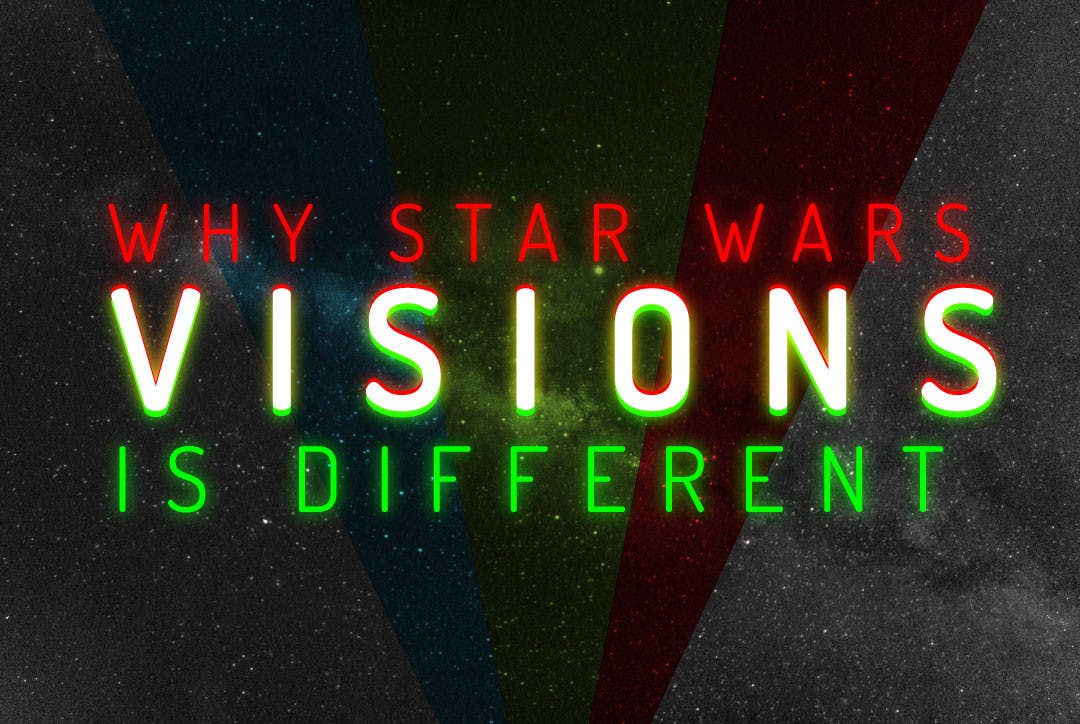Like any "Star Wars" show, there was inevitable excitement for the large fan base, but this time was different for many. "Star Wars: Visions" is the first time "Star Wars" has ventured into anime.
Experience architecture junior Demetri Zervos has been watching both "Star Wars" and anime since he was young.
“I was absolutely ecstatic," Zervos said. "My first thought was ‘This is a big win for the anime community' ... After watching the first episode I’m like ‘Wow, this is everything I ever wanted.’”
The series was released Wednesday, Sept. 22, on Disney Plus. All nine episodes were released at once. The show is an anthology, with every episode telling a story from a different corner of the "Star Wars" galaxy.
Disney hired five Japanese animation studios to animate one episode each, and two studios to animate two episodes each. Each episode has a distinct animation style but uses the familiar aesthetic of "Star Wars," which leads to some astonishing visuals.
Chemical engineering junior Noelle Kurien only recently started watching "Star Wars" but said she was excited to watch Visions to see how the show would mesh together. She felt that the choice to do different animation styles for each episode would cater to older and younger audiences.
“I think, for people who might just be Star Wars fans but not anime fans, that kind of gives them a taste of multiple different styles of anime,” Kurien said. “It also might clear some misconceptions they have about anime. Like not all episodes have the very childish-looking animation style, some of the episodes are pretty serious.”
“I’ve never seen animation like that before. I mean I can tell it was CGI, but man, they did such a good job,” Zervos said of the first episode.
Visions also represent a full circle for "Star Wars" back to the Japanese film. George Lucas, the creator of "Star Wars," borrowed heavily from Japanese filmmaker Akira Kurosawa’s film "The Hidden Fortress." Many parts of the plot and characters in Kurosawa’s film are replicated in "A New Hope." The Jedi fighting style takes inspiration from samurai sword-work, and Obi-Wan Kenobi was based on The General, a character from "The Hidden Fortress."
Japanese professor David Humphrey says that some people in Japan could look at the series as an overdue recognition of Japanese influence on "Star Wars."
“There’s always been that influence, and sometimes it doesn’t get recognized,” Humphrey said. “In more recent years, it has.”
The first episode was about a wandering samurai character named Ronin warding off a sith warlord from a village, and Humphrey felt like this was a nod back to Star Wars’ Kurosawa roots. The second episode, which was about a rock band saving their bass player from being killed, takes inspiration from band and music animes.
He also believes that this is a chance for "Star Wars" to represent Asian Americans, particularly since some movie studios have failed to in the past.
“(Studios) keep blocking out Asian Americans from these characters, these roles," Humphrey said. "So I think it’s positive in that sense right, it’s still not representation in terms of acting, but it’s allowing into the American conversation.”
"Star Wars" and anime fans such as Zervos and Kurien are hoping that more collaborations like Visions will continue to happen.
“My theory was that this was just a trial run for all these animation studios, whichever one has the most popular episode, they’re going to make an actual series out of it,” Zervos said. “This opens the doors for a lot of animation studios.”
The next "Star Wars" TV show, "The Book of Boba Fett," is set to release in December 2021 on Disney Plus.
Support student media!
Please consider donating to The State News and help fund the future of journalism.
Discussion
Share and discuss “Why 'Star Wars: Visions' is different” on social media.


